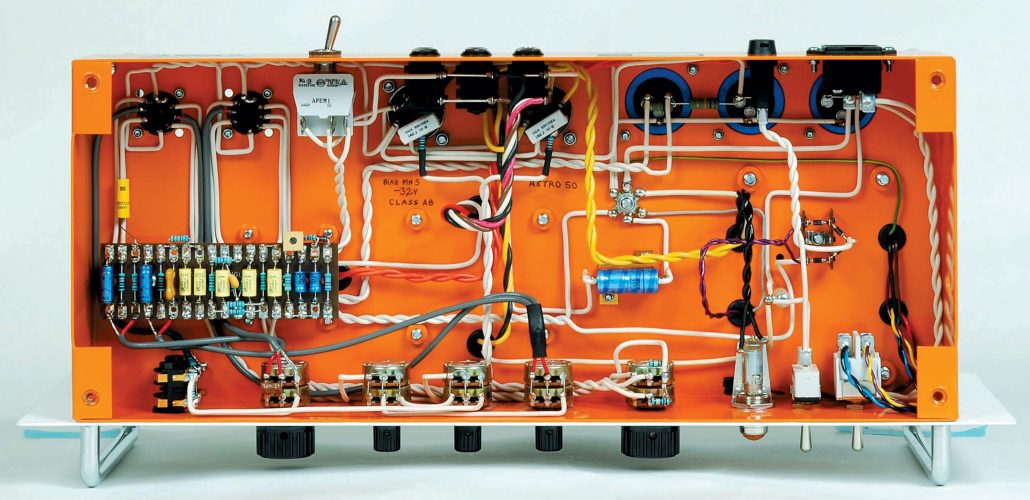Cliff Cooper founder and CEO:
During 1969, we sampled the sounds used by a number of top guitarists – among them, Peter Green, Marc Bolan and Paul Kossoff, all of whom liked to spend time in the Orange Shop just chatting and playing guitars. We asked these and other professional guitarists to plug into our mixing desk, play around, and find the sound that they liked best. We were then able to measure the sound characteristics and decide what changes were needed to the Orange amp circuitry. We would then send these circuitry changes to Mat up in Huddersfield so that he could incorporate any modifications into our amplifiers. Basically it was a question of what our customers wanted.
As Orange became more established, we found that a lot of people liked our amps, but it wasn’t across the board. Many guitarists told us that our amps just didn’t sound as loud as some other makes, watt for watt. Using signal generators, oscilloscopes and other measuring equipment, we measured an Orange OR120 amplifier in our workshop. It gave out a true 120 watts RMS (Root Mean Square). We then measured another famous make of 100 watt amplifier, which gave 96 watts output – but it still sounded much louder than the Orange amplifier. We just couldn’t figure out why this was. At the same time, we tested the distortion levels. The other amplifier had a far more distorted sound than the Orange amp.
I arranged a meeting with a leading ear specialist with a practice in London’s Harley Street. He explained to me how the brain can register distortion as pain in order to protect the mechanism of the ears. The jagged harmonics produced by the distortion work the ear’s conducting bones harder, and this is perceived by the audio nerves as an increase in sound level. The original Orange amps were especially clean sounding with very little distortion and so it was, in fact, the clean sound that was the root of our problem. So thanks to the ear specialist we had solved the mystery. In order to correct the situation we gave the amp a lot more gain and modified our circuitry in a different way to the amplifiers we had tested. The main changes were to the tone stack at the front end and the phase inverter. These changes gave birth to the ‘Orange sound’ and were incorporated in the first ‘Pics Only’ amps – our amps with hieroglyphs. The sound perhaps is best described as ‘fat’ and ‘warm’ – more musical and richer in harmonics, with a unique saturation in the mids band. It also improved the sustain. That said, choice of sound naturally is a personal thing.


